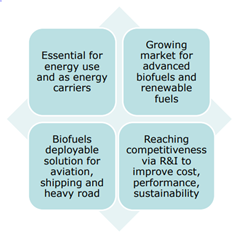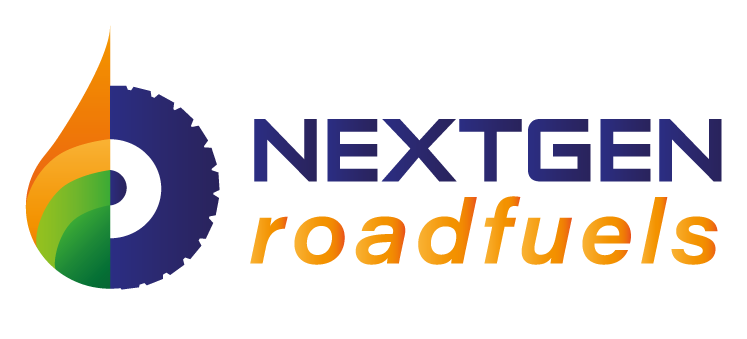With the Green Deal in motion, the European Union is striving to be the first climate-neutral continent on the planet by 2050 respecting three wills: protect human life, animals, and plants by cutting pollution; support companies to become world leaders in clean products and technologies; help ensure a just and inclusive transition. Ultimately, the European Green Deal will improve the well-being and health of the citizens and future generations. Within this context, the role of Research & Innovation (R&I) is pivotal to fulfill the target for at least 55% GHG reduction in 2030 and to stimulate EU competitiveness in EU’s ambitious new industrial strategy. Moreover, R&I aims at leading international collaboration for global emissions and to reduce the carbon footprint in transport, focus on which renewable fuels has been allocated with great attention. The European Green Deal EU Strategies renewable fuels are designed around four COMs:
– An EU Strategy for Energy System Integration COM (2020) 299 final: to unlock the potential of sustainable biomass and biofuels, green hydrogen, and synthetic fuels.
– A Hydrogen strategy for a climate-neutral Europe COM (2020) 301 final: create an industrial chain, boost demand in industry and mobility and promote R&I in clean hydrogen.
– EU Biodiversity Strategy for 200 COM (2020) 380 final: restoring forests, soils and wetlands and creating green spaces in cities
– Sustainable and Smart Mobility Strategy – putting European transport on track for the future COM (2020) 789 final: by 2030 at least 30 million zero-emission vehicles in operation, carbon neutral collective travel of under 500 km, automated mobility deployed at large scale, zero-emission vessels ready for market. Also, by 2035 zero-emission large aircraft are to be ready for market.
Now, with these ambitious goals settled someone may wonder how the EU is going to get there. The EU compiled a 2030 climate target plan implementation summarized in the figure below.

Figure 1 – 2030 climate target plan implementation
With the EU allocating more than 500 billion Euro for climate and environment, the plan can become a reality and R&I is crucial for bringing in new and innovative solutions. The world of biomass ends up in Cluster 5 – Climate, Energy and Mobility where a sustainable, secure, and competitive energy supply is the core goal.

Figure 2 – Challenges & Opportunities
Bioenergy, biofuels, and renewable fuels are largely expected to ramp up replacing the damaging role of fossil fuels. As the latter is so rooted in the economic system, the biomass byproducts are facing huge challenges and opportunities as shown in Figure 2. In order to develop a solid technological base ground, a well-crafted R&I policy framework is to be in place. The policy’s focus is around five thematic:
– Technology improvement & diversification
– Feedstock diversification
– Drop in renewable fuel
– Market uptake and addressment of particular transport needs
– Breakthrough research and market-creating innovation
– Coordinated R&I funding / risk-funding needed for market uptake
– International cooperation to tackle global societal challenges
In addition to these factors, a seamless integration of bioenergy and biofuels into existing infrastructure can facilitate and speed up their adoption through the use of technologies of four types:
– Thermochemical (pyrolysis, gasification, HTL, combustion)
– Biochemical
– Electrochemical
– Photochemical
Something to keep an eye on is the next generation technologies such as algal fuels, novel catalysis, artificial photosynthesis, etc. and on bioenergy solutions for a circular economy in a value chain approach. Moreover, the coupling of renewable electricity and /or renewable hydrogen production and /or CCS in bioenergy conversion systems with biofuel & renewable fuel production can lead to an efficient production with negative carbon emissions.
